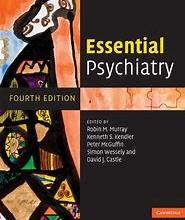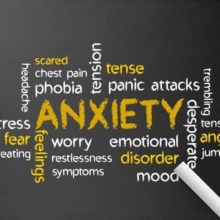00:00:02
Just how old is your mind? In the video game and film “Assassin’s Creed,” ➯➱ ➫ ➪➬
ᴠɪᴅᴇᴏ ᴜɴᴀᴠᴀɪʟᴀʙʟᴇ
ᵖˡᵃʸᵇᵃᶜᵏ ᵒⁿ ᵒᵗʰᵉʳ ʷᵉᵇˢᶦᵗᵉˢ ʰᵃˢ ᵇᵉᵉⁿ ᵈᶦˢᵃᵇˡᵉᵈ ᵇʸ ᵗʰᵉ ᵛᶦᵈᵉᵒ ᵒʷⁿᵉʳ
𝒲𝒶𝓉𝒸𝒽 ℴ𝓃 𝒴ℴ𝓊𝒯𝓊𝒷ℯ
the main character Desmond Miles lives an ordinary mundane life when he learns something incredible about his family history: he’s the direct descendant of assassins from the Third Crusade, the Italian Renaissance, and the American Revolution. Scientists use an experimental technology that allows Desmond to relive the memories of his ancestors which are stored inside his own DNA. The technology works because somewhere deep within his genes, his ancestor’s memories live on, giving rise to a kind of ancestral memory. But this is of course just science fiction. Or is it? Some psychologists are now studying an area called “genetic memory” which are memories we’re born with. Memories we have before we’ve ever experienced the world. And are somehow incorporated into our genes over time. One of the ways we see this is in mice. In a 2013 study, mice were trained to be afraid of the smell of a chemical called acetophenone, which has been compared to the smell of cherries and almonds. They did this by releasing the smell into the cage just before giving them small electric shocks. The mice quickly learned that whenever they smelled acetophenone it was a sign that they were about to be electrically shocked to the point where they would shake in fear whenever they smelled the chemical. Incredibly, scientists found that when these mice had babies, these babies had somehow inherited their fear of the same smell, even though they had never smelled or come in contact with acetophenone in their lives. A third generation of mice, their grandchildren, also inherited this reaction to the same smell, which suggests that these memories were somehow being passed on through their genes into future generations. A similar effect was found in a controversial 2015 study of holocaust survivors, which found that the tremendous stress experienced from people who lived through the holocaust may have been passed on to their children, even though these children never experienced the holocaust themselves. This study definitely has its critics, and the question for many skeptics is how could these memories be stored? Because our traditional understanding is that memories are formed through networks of cells called neurons in the brain, but researchers are discovering a new kind of memory that’s stored within the nucleus of these cells, deep within our DNA. And this raises another question: if there is such a thing as genetic memory, what part of the genome codes for it? Science doesn’t have an answer. We haven’t yet discovered the purpose of many segments of our genetic code. There’s an estimated 20,000 to 30,000 genes that make up the human genome. In the past they’ve been dismissed as “Junk DNA” but some of these segments may contain genetic memory. This might seem like a new idea, but it’s not. The idea of a collective memory that’s passed on from our ancestors can be traced to one of the most influential psychologists in history: Carl Jung. As a psychiatrist by training, Jung would go on to create his own approach to psychoanalysis called analytical psychology. Before Carl Jung, the dominant theory put forward by psychologist Sigmund Freud was that the mind was made up of two main parts: a conscious mind, which consists of all the things we’re aware of including the ego, and an unconscious mind which is made up of all the things we aren’t aware of, a repository of repressed emotions and desires. Freud believed that when we experience something very disturbing or upsetting, those memories are pushed away into the unconscious mind where they’re hidden from our conscious awareness, but continue to influence our actions. This, he argued, was a psychological defence mechanism which he called “repression.” Jung and Freud were actually close friends and collaborators. Early in their friendship, Freud would come to see himself as Jung’s mentor. He once called Jung “my adopted eldest son, my crown prince and successor.” And he hoped that Jung would one day carry forward Freud’s own psychoanalytic approach to psychology, but this would never come to pass. Tensions grew as Jung went on to develop his own theories of psychology, which diverged sharply from Freud’s. Their disagreements grew. In 1909 both Jung and Freud were invited to lecture at Clark University where they also spent time analyzing each other’s dreams. Jung described a dream where he was on the top floor of a house, which was filled with beautiful paintings. He then went down to the main floor of the house, which was much older the furniture was medieval and dark. As he looked closer at the floor, he found a small door, which led into the basement. And when he went down the steps, he saw piles of bones, broken pottery, and two human skulls on the ground. Freud demanded to know who the two skulls belonged to, because he believed that Jung was harboring an unconscious death wish against those people. But Jung disagreed with Freud’s interpretation of the dream. Jung believed that the house in the dream represented the human mind, and each floor was a different level of consciousness. The upper floor symbolized the conscious mind, the ground floor was the unconscious mind, and deep in the basement was the most fundamental level of all, the part of the mind that stores the collective memories of our ancestors. Jung called this part of the mind the “collective unconscious.” Freud resisted these ideas and it marked the beginning of what would become two separate schools of thought. And their growing disagreements would lead to the bitter end of their friendship. And in September of 1913 they would meet for the last time.
00:05:46
So what exactly was this idea that caused such a dramatic rift in their friendship? What is the collective unconscious? We can think of it as a kind of universal human memory. A storehouse of symbols in imagery derived from eons of history and evolution. We inherit the collective unconscious from our ancient ancestors and it’s common to every person and every culture in the world. It’s a part of the mind that we all have available to us, and we can all tap into. And Jung saw within the collective unconscious, the potential for reaching our highest selves, which he sometimes referred to as the “two million year old mind that’s in all of us.” And so it’s often asked: how did he come up with this revolutionary idea? Jung describes working with mentally ill patients who would suddenly produce startling imagery and symbols that were remarkably similar to those of distant cultures and religious traditions that they couldn’t have come in contact with. His patients never traveled outside of Switzerland and they were never exposed to these ideas. It was here that he began to form the idea of the collective unconscious. Jung maintained that the collective unconscious was made up of psychic structures that are universal, that form all the elements of human experience, and are expressed as recurring patterns that shape our lives. He called these patterns “archetypes.” Examples of archetypes include the great mother, the wise old man, and the trickster. We see versions of these archetypes in every culture in the world, and it helps explain the remarkable similarity in the symbols, myths, and rituals that we find in different groups of people. Even among those who never came in contact with one another. But another key implication is that archetypes are also an important part of our personal growth and self-development. We see this in one of the most important archetypes, what Jung called the “persona.” The persona is the social mask we wear when we interact with other people in the world. It represents how we want to be seen and understood by others. Someone’s social media profile, their facebook picture, or their instagram account are fairly good indications of the image they want to project into the world. The persona isn’t a bad thing, it’s part of maintaining a healthy psyche, because we all have to take on different social roles in order to survive in the world. The problem is when we over-identify with one particular mask. For instance, like the man who defines his whole identity in terms of his job. The flip side to the persona is what Jung called the “shadow archetype.” The shadow is the part of the mind that represents what we often think of as the negative side. It’s made up of all the parts of ourselves that we don’t want to identify with. Often it’s because we’re ashamed of these qualities, and for that reason these are the aspects that we try to hide, even from ourselves. And because of this, the shadow remains unconscious. But it still influences our actions. One of the ways the shadow reveals itself is through our judgments of other people. For example if there’s something we don’t like about ourselves, there’s often a tendency to harshly criticize others for having that same quality. This is what Jung called “projection,” which happens when we psychologically project onto others the very same qualities that we’re least willing to acknowledge in ourselves. It’s basically an act of ego preservation that enables us to deny our own faults while pushing them onto others. Projection is often something that we’re completely unaware that we’re doing, and it explains the human tendency to scapegoat groups of people to dehumanize those we disagree with and it underlies all kinds of prejudice and discrimination we find in the world. Jung maintained that the only way to address this is to confront the shadow head on, even though it’s tinged with feelings of shame, unworthiness, and fears of rejection. Because the shadow isn’t all negative. It also contains all the things that are unrealized by your conscious mind ,and because of that your shadow also has the potential to point to something more positive within yourself. The best version of you, if you haven’t realized it yet, lies in the shadow. To see this let’s imagine someone who thinks it’s never okay to be angry. He associates being a good person with being nice. He negatively judges people who express anger as having a bad temper. The problem is that there are situations in life where anger is an appropriate response to have. For example when seeing injustice or watching an innocent person being victimized. In these situations, if we can’t harness the side of ourselves that channels raw emotions like anger, then we leave it open for unethical people to take advantage of us. Incorporating aspects of the shadow like anger into our personality makes it possible for us to stand up for ourselves and apply measured aggression when more peaceful attempts to deal with unethical people have failed. In many ways, the persona and the shadow are mirror images of each other. Jung, who was also a student of Taoist philosophy, recognized the dualistic nature of the mind. He saw that the psyche itself is an interplay of yin and yang, of light and dark, conscious and unconscious. And the challenge of psychology is to find a balance between these energies to bring them together into a complete integration of the self. Which brings us to what just might be the most powerful archetype in Jung’s approach to psychology: numbers. Through studying his patients and analyzing their dreams, Jung came to believe that the numbers one to nine were some of the most potent archetypal symbols of the psyche. He noticed that these numbers seemed to correspond to the progressive stages of psychological development within the mind, and he would come to conclude that numbers themselves were the most fundamental archetype of order. In his famous essay “Synchronicity: an acausal connecting principle” Jung describes the archetypal importance of numbers.
00:11:33
“There is something peculiar, one might even say mysterious, about numbers. If a group of objects is deprived of every single one of its properties or characteristics, there still remains at the end, its number. Which seems to indicate that number is something irreducible, something which helps more than anything else to bring order into the chaos of appearances. It may well be the most primitive element of order in the human mind.” What this reveals is that numbers are the most basic and universal symbols we have. We can see this for instance with the number one, which has a numerical value as we understand it mathematically, but it also has a powerful symbolic meaning. One is the number of beginnings, it’s the start of something new, and it’s also the number of individuality, self-reliance, and striving to be the best that one can be. At the same time, one is also a very lonely number. It’s prone to feelings of isolation. All of these associations are captured in the archetypal symbol of the number one. And we find that all the numbers from one to nine each have powerful symbolic associations. Jung wrote that “number and synchronicity were always brought into connection with one another, both possess numinosity and mystery as their common characteristics, and all numbers from one to nine are sacred.” What this tells us is that by understanding the symbolism of numbers, we’re tapping into a very primal and ancient system of knowledge deep within the collective unconscious. And numerology just might be one of the most powerful ways to do that.
00:13:07
Jung believed that everything is connected, that there’s an underlying unified reality from which everything emerges into which everything returns. He called this idea Unus Mundus. And for the mystic, it’s an experience in which past, present, and future become one concrete whole. This was central to his idea of synchronicity, where two seemingly unrelated events aren’t connected by cause and effect, but are connected by meaning. This bears a striking similarity to the ancient Chinese concept of Qi which is the vital energy that flows through all things. Each of us has a personal Qi that we can tap into which we can also think of as the personal unconscious mind, but we also have the potential to tap into the cosmic Qi which is the unified connection of all of our collective energies, which unites all things in the universe, and which we can think of as the collective unconscious. In the next video in this series, we’ll look at one of the most powerful tools that Jung used to uncover many remarkable synchronicities: the ancient Chinese text the I Ching, also known as the book of changes. And it’s widely considered to be one of the most powerful oracles ever discovered. If this video is available to watch you’ll see it appearing here on the left. If this video is not yet available then i think you’ll enjoy the video on the right. If you enjoyed this video please show your support by pressing the like button. It helps me to bring more free content like this to you. As always thanks so much for watching take care of yourselves and i’ll see you in the next video.















